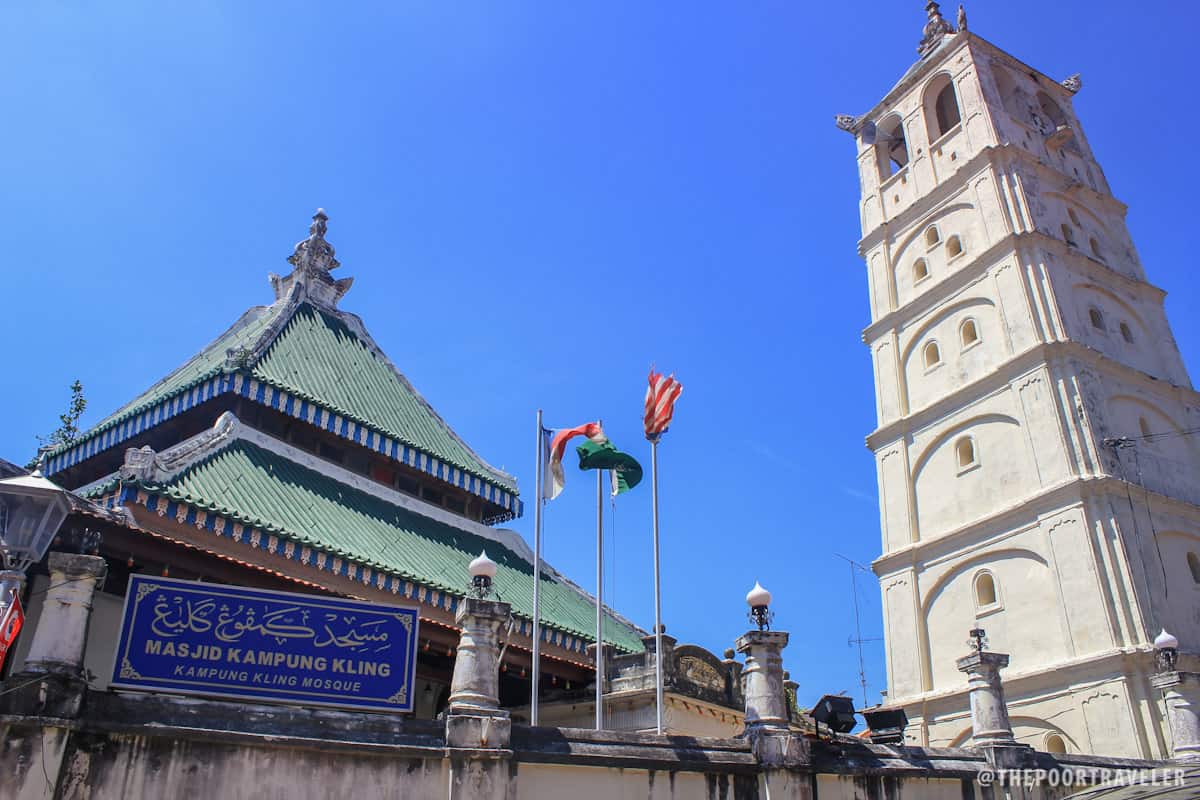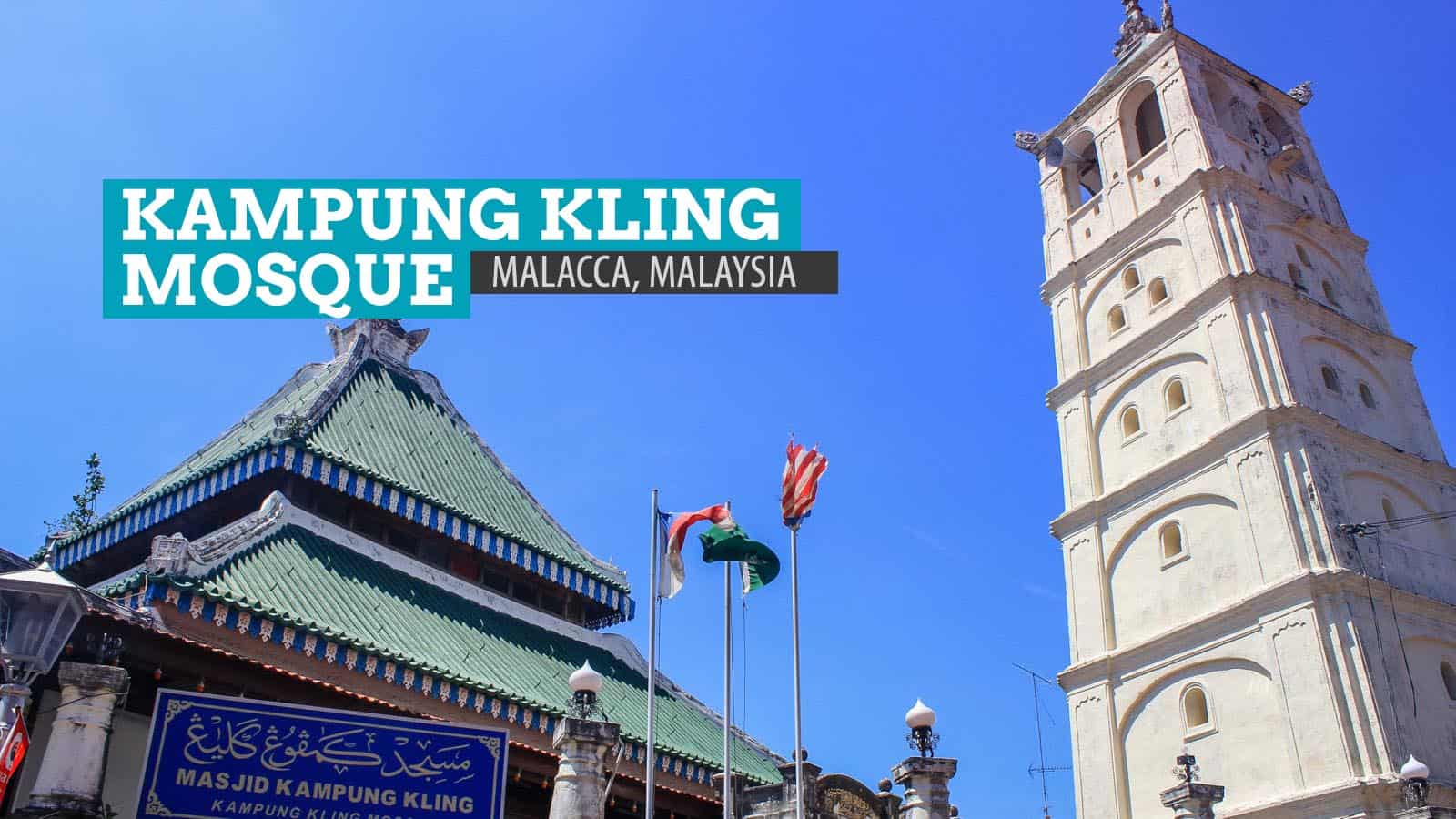A dark grey dove glided through the air into the mosque and perched atop a fountain in the middle of the pool. I looked at my friends Asta and Ces and, without saying a word, stood there and watched it. Two muslim men sitting on the porch were watching us, too, as we watched the bird. Don’t get us wrong — we’ve seen doves before, but we were drawn by how regally it stood on the second layer of the fountain before us.
We were at the courtyard of the Kampung Kling Mosque (or Masjid Kampung Kling) in Malacca. We stood on a slightly raised walkway beside a loaded pool, the center of which harbored a richly-designed functional fountain. But I’m getting ahead of the story.
Kampung Kling
One of the oldest mosques in Malaysia, the Kampung Kling Mosque was built in 1748. It stands along Jalan Tukang Emas, also known as Harmony Street or Temple Street, because the street is also home to other places of worships: the Cheng Hoon Teng Temple (Taoist, Buddhist) and the Sri Poyyatha Temple (Hindu).
Harmony Street is now flanked with Chinese shops and other commercial stores, but it wasn’t always like this. Centuries ago, the area was called Kampung Kling. Kampung means “village” in local language. Kling, on the other hand, is what they used to call Muslim Indians who hailed from South India. I’m not sure if Kling is the same as ‘Keling’, which is considered a politically incorrect and offensive term nowadays, but it may not have the negative connotation at the time the mosque was erected. This mosque became the main place of worship for the Indian population of the area during the time.

What Makes Kampung Kling Mosque Special
Unlike most mosques in Western Asia which are built on a hexagonal or rectangular plan, Masjid Kampung Kling stands on a square plan. This timber mosque is covered by a triple-tiered roof. The central roof is supported by four primary columns while another set of four columns raise the lower two layers. The porch area of the mosque is bordered by a short Corinthian colonnade. Chinese ceramic tiles decorated the roof, some parts of the walls, and the floor. But the Chinese influence doesn’t stop there. The eaves of the roofs are curved like most old Chinese buildings. The carpeted floor of the main prayer hall can be accessed through several doors, one of which serves as the mosque’s iwan, leading to the courtyard behind.
The courtyard, where we watched a dove quench its thirst, hosts a pool with a fountain at its center, used for ablutions. Another set of columns surrounds the pool and forms a covered walkway around it.
The most eye-catching structure in the site, however, is the imposing minaret just beside the mosque. It is a minaret, yes, but it somewhat resembles a Chinese pagoda. Unlike the timber prayer hall, the commanding minaret is built entirely of stonework. It has six (?) tiers topped with green roof and an apex so high I could not see what the design was exactly. Each layer of the tower is windowed but the number of arch windows vary. Each side of the top tier has two big arch windows and several smaller ones; the second tier has three small windows; the third has two on each side; and so on.
In 1868, around 120 years after its construction, a high wall was built to protect both the mosque and minaret from the street. The wall opens through an arched-topped, tile-roofed gate, ornamented with three acroteria.
Perhaps one thing that I really liked about Kampung Kling Mosque is that it embodies the street, the city, and the country that cradles it. The influences in architecture and design of the place reflect how Malaysia has embraced the many cultures that nurtured its history and traditions, and ultimately makes it the nation that it is now.
Posted: 2012 • 8 • 12



























The architecture of the mosque is simply amazing. Thanks for sharing this, need to keep it in my bucket list.